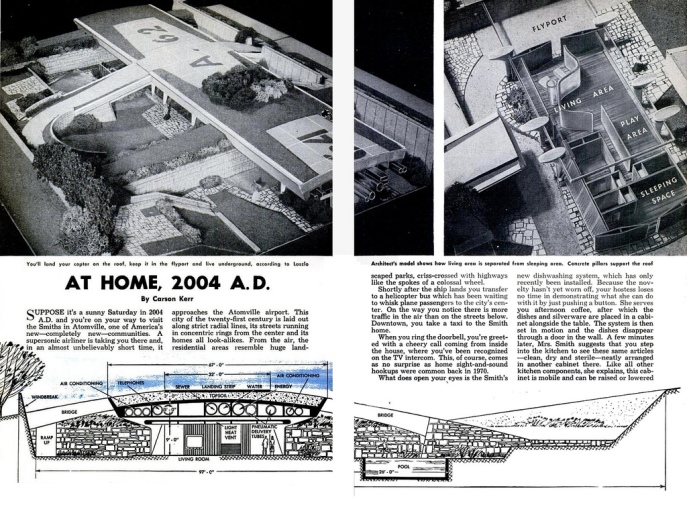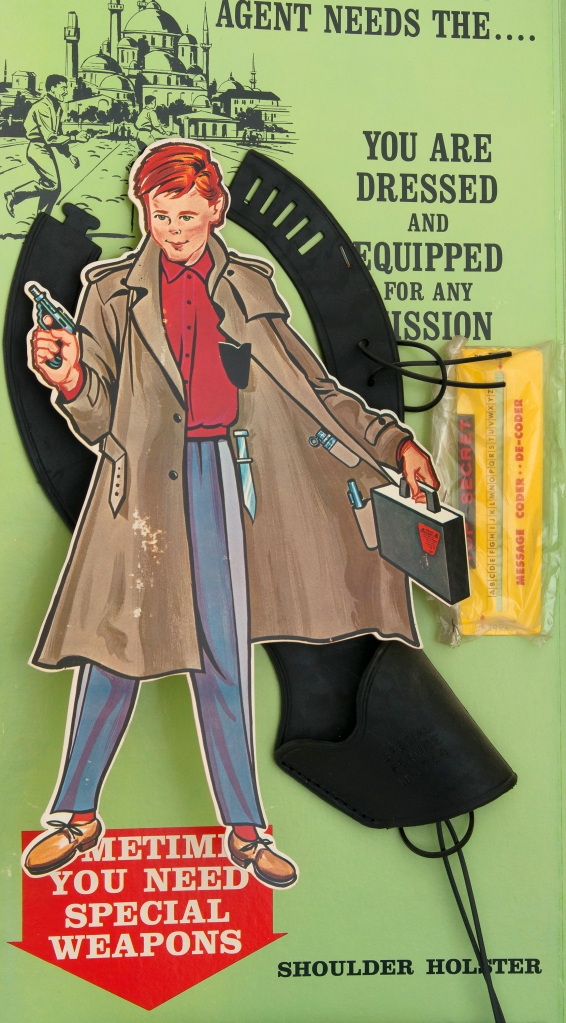60s
Paul László: The Quintessential Atomic Age Architectural Designer
StandardPaul László was a Hungarian-born modern architect and interior designer whose work spanned eight decades and many countries. László built his reputation while designing interiors for houses, but in the 1960s, largely shifted his focus to the design of retail and commercial interiors. – wikipedia
László was the quintessential Atomic Age mid-century designer. In 1952 TIME magazine called him ‘The Rich Man’s Architect’. He did it all – he ‘design[ed] his houses down to the last ashtray or built-in Kleenex holder.’ He also designed a rather mod US Air Force bomb shelter:

Laszlo US Air Force Bomb Shelter Design (image via orhan ayyuce)
Below are some super articles covering Paul Laszlo’s Atomic Age masterpieces. Super thanks to MidCentArc on flickr. (Click on the images for a larger view)

Atomville – At Home, 2004 A.D. – 1954 (Page 1 of 3) – Architect: Paul Laszlo (Popular Mechanics Magazine)
Paul Laszlo was truly a Mid-Century visionary – if you could afford him.
Behold…the Kuba Entertainment Center
StandardThe German made and designed Kuba models were offered for sale from 1957 to 1961.

A 1961 ‘Komet’ was sold in Köln, Germany on June 9, 2001 for DM16824.14 (about $7300 USD). These sets are exceedingly rare.
Television-Broadcast-Phono-Combination
Technical Data:
TV 53 cm (21 inch) television with radio receiver and record player (phonograph).
Combined TV and radio chassis GRAETZ F 44K Record player: 4-drive record changer Telefunken TW 561
installation of a tape recorder is possible.
8 speakers total, with 2 front-facing horn speakers.
Special Feature: Upper portion with screen can swivel.
Cabinet: Palm and maple woods with polyester high-gloss finish
191 x 167 x 60 cm (75 inches x 66 inches x 24 inches)
Komet recommended price: DM 2.785,-. (Approximately $1,250.00 US, which at that time, represented more than a month’s wages for an average worker)
Sometimes You Just Need A Counterspy Outfit
StandardThe Marx 1966 Man From U.N.C.L.E. Counterspy Outfit had it all. Check out this elaborate store display up for auction at Hake’s.
The Special Equipment: handcuffs, a bullet shooting lighter, a nerve spray camera, a cool walkie talkie, a bullet shooting knife, a flat hand grenade, and ammunition.
The Disguise Kit includes: an eye patch, makeup, eye glasses, mustaches, two beards, and a badge case (just in case you need to show your real identity).
The All Purpose Gun includes: a missile grenade, a scope, a silencer, a sonic pistol, a barrel extension, and a stock extension.
And, of course, what self-respecting counterspy would leave home without the obligatory attache case?
The Weatherproof Trench Coat With Secret Pockets includes a Special Squirting Button for creative use.
Come fly with us…
StandardYou Asked, We Listened – High-Fi Radio Is Again In Orbit
StandardThe Robots – ‘They Play On authentic Instruments’
Standard
The Robots: Oscar on Accordion, Ernest on Sax, and Anatole on Drums (image via 4peepsake)
Seen above is The Robots first lp record album cover released in the late 1960s. They were the first animatronic musical group that actually play real instruments.
An ex-POW in Germany during WWII, [Edouard] Diomgar was an engineer willing to raise money for his ex-POWs relief foundation (whose logo can be seen on the bass drum). During the 1950s and 1960s, he exhibited his robots trio at fun fairs, open air markets or train stations in France…Automatically synchronized, the bots’ movements are impulsed by photoelectric cells reading punch cards, sending information to arms and fingers via electromagnetic action. Most importantly, the robots actually produce music from their instruments, contrary to playback systems in US animatronic. Only the sound of the saxophone is replaced by what sounds like a mechanical Ondioline. Their repertoire includes everything from French musette accordion and popular songs, twist and rock’n’roll numbers from the 1960s, US musicals (#1, Leonard Bernstein) or jazz (#6, Sidney Bechet).
Les Robots-Music were exhibited during an all-robot show in Berlin’s Museum für Kommunikation in 2007. Check out their lively rendition of La Bamba below…
To read a bit more about the history of animatronic robot orchestras click here to get the scoop from Continuo.













